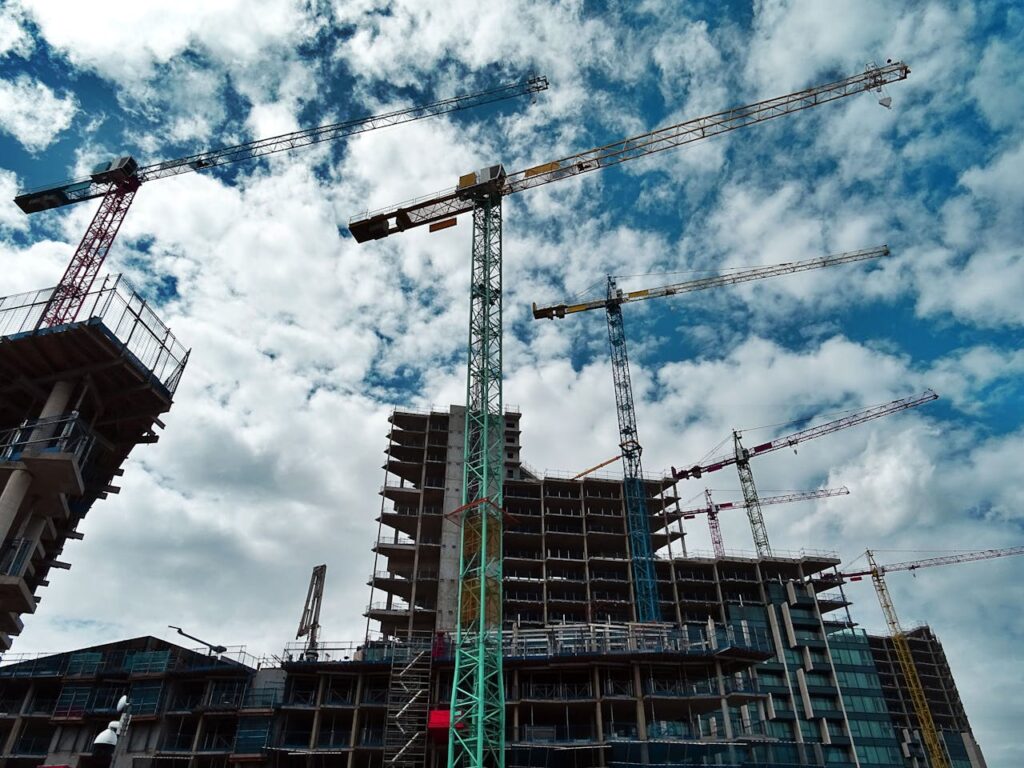Infrastructure developments have long been recognized as significant economic growth and urbanization drivers. The ripple effects of new roads, transit systems, and utilities can be substantial for commercial real estate investors and stakeholders. This article explores how infrastructure improvements impact commercial real estate values, shedding light on the mechanisms through which these projects influence market dynamics.
The Direct Influence of Infrastructure on Accessibility
One of the most immediate impacts of infrastructure development on commercial real estate is the enhancement of accessibility. Improved transportation networks, such as highways, bridges, and public transit, reduce travel time and costs, making a location more attractive for businesses. When accessibility improves, commercial properties often see increased demand, leading to higher occupancy rates and, consequently, rising property values. Businesses are willing to pay a premium for locations that offer easy access to suppliers, customers, and employees.
The Role of Public Investment
Public investment in infrastructure can significantly alter the landscape of commercial real estate. Governments often invest in infrastructure to stimulate economic development in targeted areas. These investments include anything from new highways and public transit systems to utility upgrades and broadband expansion. When the government commits to improving infrastructure, it signals to investors that the area is poised for growth, encouraging private investment in commercial real estate. This influx of capital can lead to the development of new commercial properties and the revitalization of existing ones.
Economic Growth and Commercial Real Estate
Infrastructure projects are often catalysts for economic growth. By facilitating the movement of goods and people, they enable new business opportunities and stimulate local economies. When an area experiences economic development, commercial real estate typically benefits. More businesses move into the area, leading to higher demand for office, retail, and industrial spaces. This increased demand drives up property values and rental rates, providing substantial returns for investors.
Infrastructure Developments
When businesses relocate to areas with enhanced infrastructure, they often turn to reliable moving companies like A2B Moving and Storage to facilitate the transition. The efficiency and professionalism offered by such companies can significantly impact the success of the move. And more businesses moving in means more infrastructure development. As a result, they enhance the appeal of commercial properties in the area. Furthermore, as businesses move to locations with better infrastructure, the demand for commercial real estate increases, pushing up property values.

Infrastructure and Retail Real Estate
Retail real estate is particularly sensitive to changes in infrastructure. The success of retail businesses often depends on foot traffic and accessibility. Infrastructure projects that improve roads, sidewalks, and public transit can significantly boost retail areas. For example, extending a subway line or constructing a new highway exit can increase the flow of potential customers to a retail district. Retailers recognize the value of these improvements and are often willing to pay higher rents for prime locations, driving up property values in the process.
The Impact on Office Spaces
Office real estate also benefits from infrastructure developments, especially those that enhance connectivity and accessibility. In an increasingly interconnected world, businesses prioritize locations that offer easy access to transportation hubs, broadband infrastructure, and amenities. Infrastructure projects that address these needs can make office spaces more desirable. For instance, developing a new metro line connecting suburban areas to the city center can make office locations along the route more attractive, leading to increased demand and higher property values.

Industrial Real Estate and Logistics
Infrastructure improvements are crucial for industrial real estate, particularly logistics and distribution centers. The efficiency of supply chains depends on the quality of infrastructure. Investments in highways, ports, and railways can reduce transportation costs and improve delivery times, making industrial properties more valuable. Companies are often willing to pay a premium for facilities well-connected to major transportation networks, driving up the value of industrial real estate in these areas.
Case Study: Urban Renewal Projects
Urban renewal projects offer a clear example of how infrastructure developments can transform commercial real estate values. In many states, comprehensive infrastructure improvements have revitalized neglected or underutilized areas. These projects often include upgrades to roads, public transportation, utilities, and the development of parks and public spaces. As a result, these areas become more attractive to businesses and investors, leading to a surge in commercial real estate activity and a corresponding increase in property values.
One such state is Maryland. Its strategic investments in transportation and utilities make it an attractive destination for companies looking to expand or relocate. Hiring a skilled team in Maryland to assist with the move can ensure a smooth transition, minimizing downtime and allowing businesses to quickly capitalize on the benefits of the state’s improved infrastructure. The state’s commitment to enhancing its infrastructure network continues to attract businesses, driving up demand for commercial real estate and boosting property values.
Long-term Benefits for Commercial Real Estate
The long-term benefits of infrastructure developments for commercial real estate are profound. Infrastructure projects often have a lasting impact, providing continuous benefits over many years. Enhanced transportation networks, improved utilities, and better connectivity attract and retain businesses, ensuring sustained demand for commercial properties. Investors who recognize the potential of infrastructure improvements can make strategic decisions that yield long-term gains.
Challenges and Considerations
While the benefits of infrastructure developments are significant, there are also challenges and considerations for commercial real estate investors. Infrastructure projects can be complex and time-consuming, often facing delays and budget overruns. Additionally, the impact of infrastructure improvements can vary depending on the specific context and location. Investors must conduct thorough due diligence, considering project feasibility, timelines, and potential disruptions during construction.
Conclusion: Shaping Commercial Real Estate Values
Infrastructure developments play a crucial role in shaping commercial real estate values. By enhancing accessibility, stimulating economic growth, and attracting investment, these projects can significantly increase property values. For commercial real estate investors, understanding the impact of infrastructure improvements is essential for making informed decisions and capitalizing on new opportunities. Whether through public investment, urban renewal projects, or private sector initiatives, infrastructure development remains a key driver of value in the commercial real estate market.
Photos used:
https://www.pexels.com/photo/low-angle-photography-of-buildings-under-blue-and-white-sky-998499/


